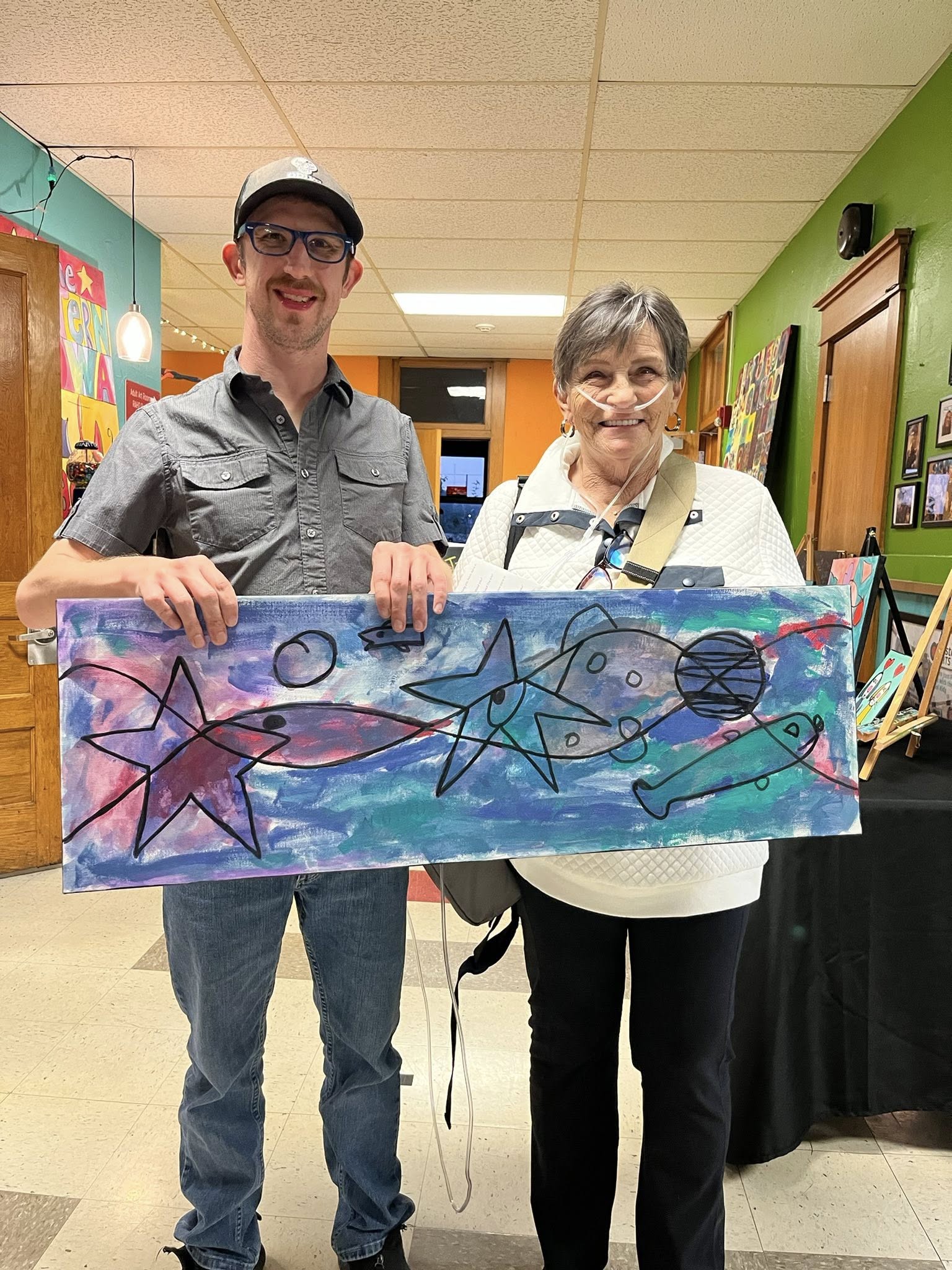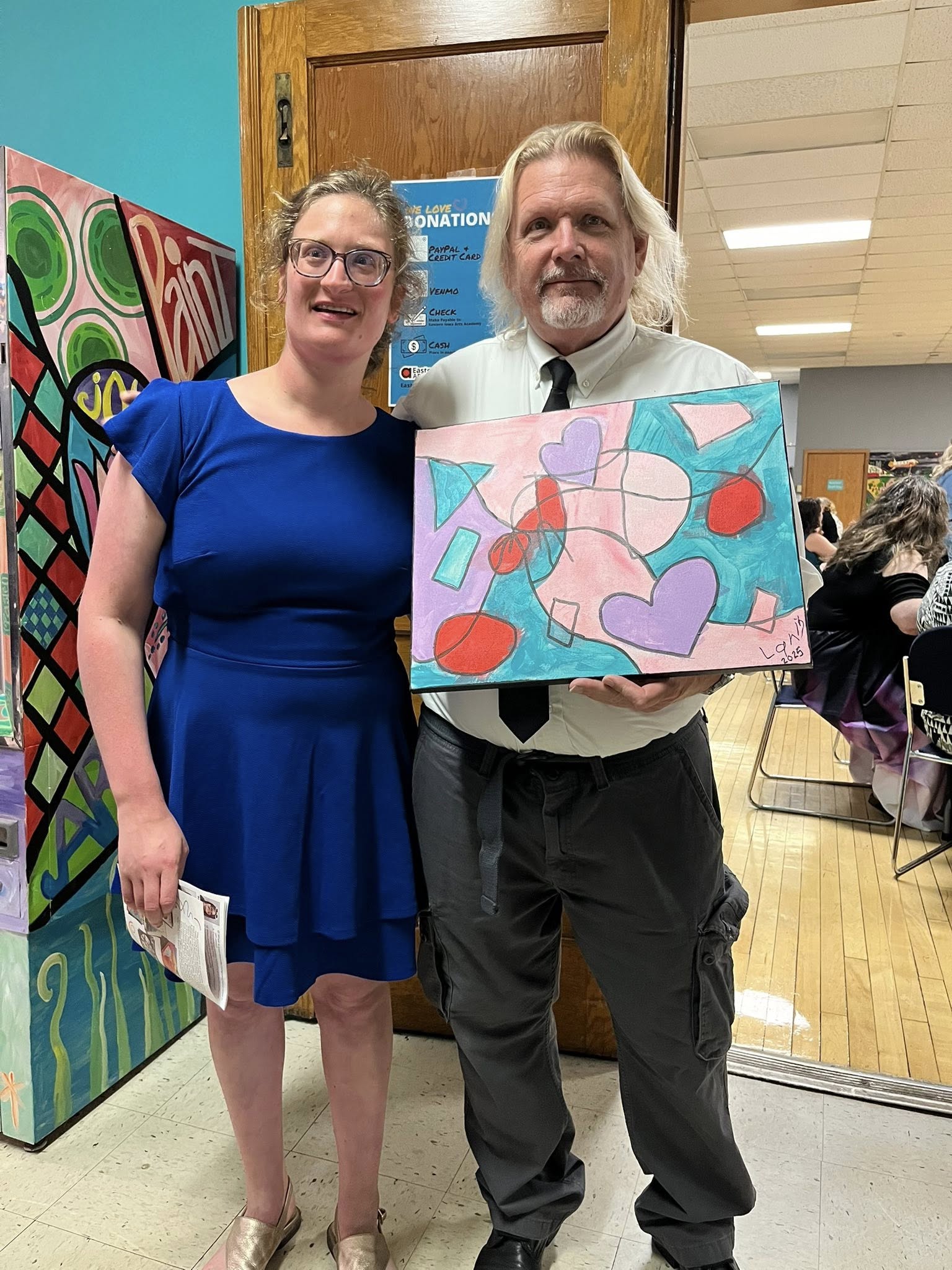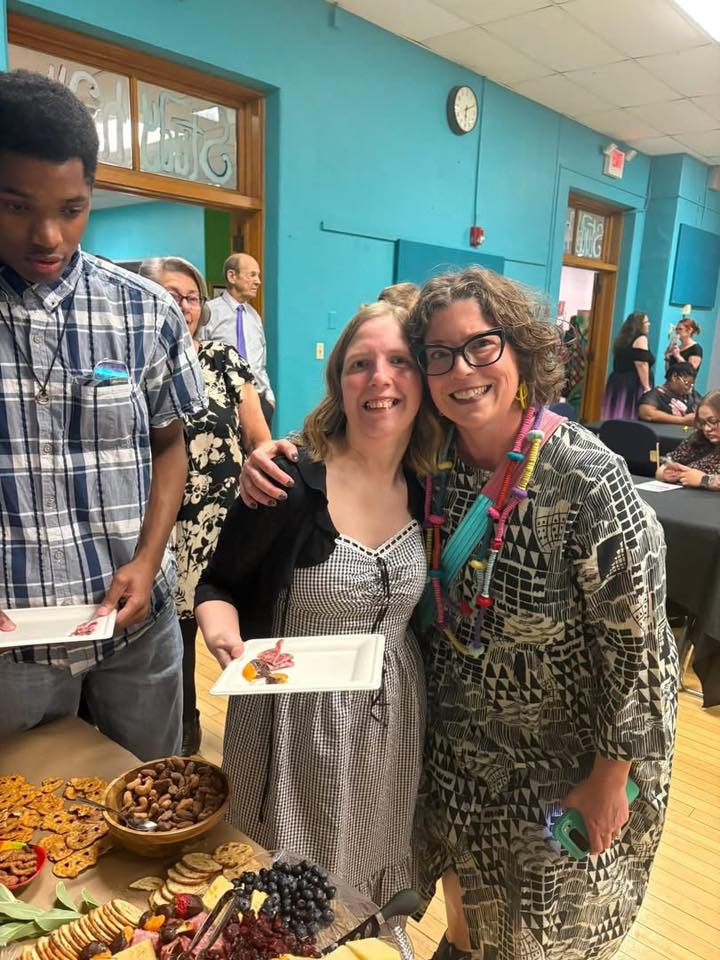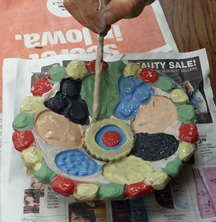 by Kim O'Meara
by Kim O'Meara
Healing is an internal process that restores balance and harmony to the mind, body and spirit. Patients not only need to be treated for serious illness, they also need assistance with the healing process aimed at reducing the stresses and fears that accompany serious illness. Art and music-making are healing agents.
Arts interventions are based on the belief that the creative process involved in the making of art is healing and life enhancing. It is used to help patients, their caregivers and family members increase self-awareness, cope with the symptoms of the illness, and adapt to stressful and traumatic experiences. The objective of EIAA’s arts programming is to use the creative process to develop awareness, reduce stress and express emotions.
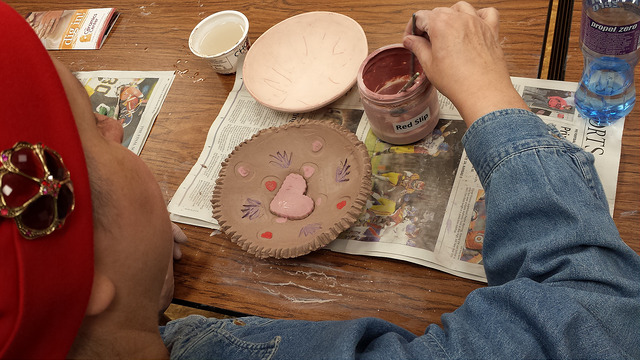 A growing body of evidence demonstrates that art and music therapy can be effective in reducing symptoms associated with cancer and other serious illnesses in both children and adults. In The Journal of Pain and Symptom Management in Cancer: Innovative Use of Art Therapy (February 2006, Volume 31), researchers stated that art therapy is easy to implement in a hospital setting and that it is widely accepted by participants who found it distracted them from their symptoms and was calming. They went on to say that while art therapy is a relatively inexpensive intervention, its effects may be long lasting by teaching individuals techniques for managing their illness. Expressive art and music-making are now considered by healthcare professionals to be one of the most powerful, as well as cost effective, self-healing tools available. In the study mentioned above, funded by the National Institutes of Health, results showed that cancer patients who received eight weeks of mindfulness-based art therapy reported a significant decrease in distress, anxiety, and depression. In a study conducted at Northwestern Memorial Hospital in Evanston, Illinois, cancer patients reported significant reductions in eight of nine symptoms measured by the Edmonton Symptoms Assessment Scale (ESAS). Symptoms of pain, tiredness, depression, anxiety, drowsiness, lack of appetite, well being, and shortness of breath all showed improvement as a result of art therapy sessions. The ninth symptom, nausea, did not show improvement. The patient’s quality of life was significantly enhanced and improved!
A growing body of evidence demonstrates that art and music therapy can be effective in reducing symptoms associated with cancer and other serious illnesses in both children and adults. In The Journal of Pain and Symptom Management in Cancer: Innovative Use of Art Therapy (February 2006, Volume 31), researchers stated that art therapy is easy to implement in a hospital setting and that it is widely accepted by participants who found it distracted them from their symptoms and was calming. They went on to say that while art therapy is a relatively inexpensive intervention, its effects may be long lasting by teaching individuals techniques for managing their illness. Expressive art and music-making are now considered by healthcare professionals to be one of the most powerful, as well as cost effective, self-healing tools available. In the study mentioned above, funded by the National Institutes of Health, results showed that cancer patients who received eight weeks of mindfulness-based art therapy reported a significant decrease in distress, anxiety, and depression. In a study conducted at Northwestern Memorial Hospital in Evanston, Illinois, cancer patients reported significant reductions in eight of nine symptoms measured by the Edmonton Symptoms Assessment Scale (ESAS). Symptoms of pain, tiredness, depression, anxiety, drowsiness, lack of appetite, well being, and shortness of breath all showed improvement as a result of art therapy sessions. The ninth symptom, nausea, did not show improvement. The patient’s quality of life was significantly enhanced and improved!
